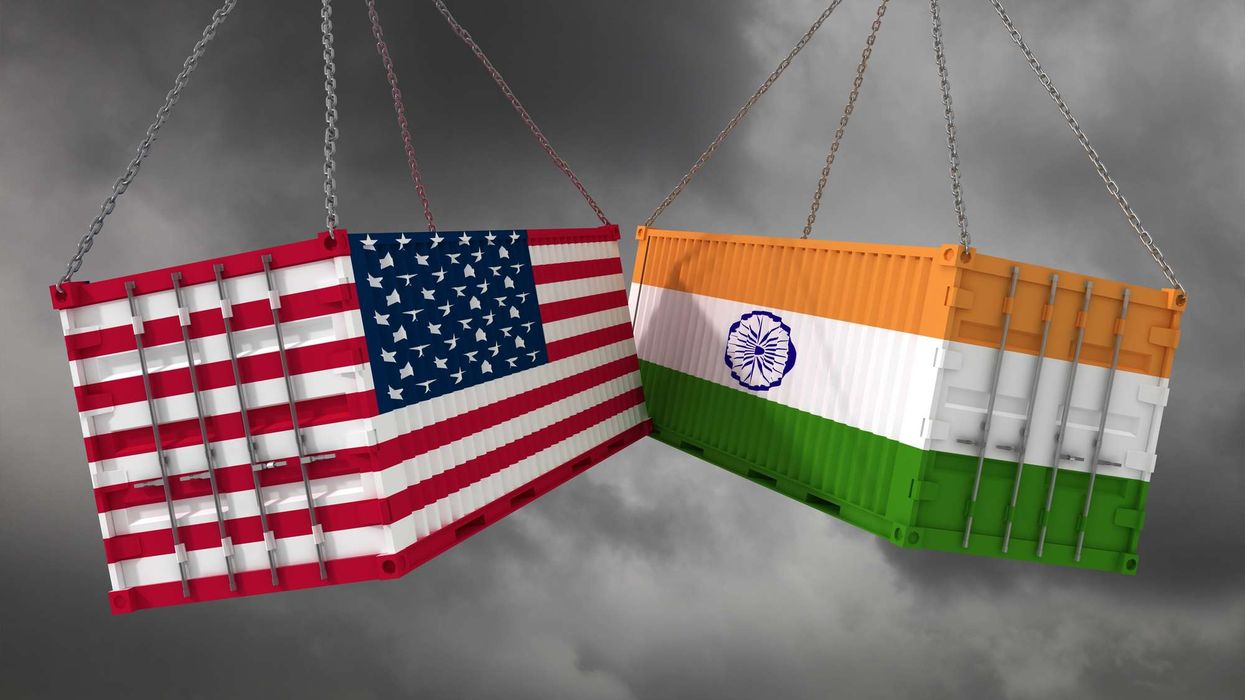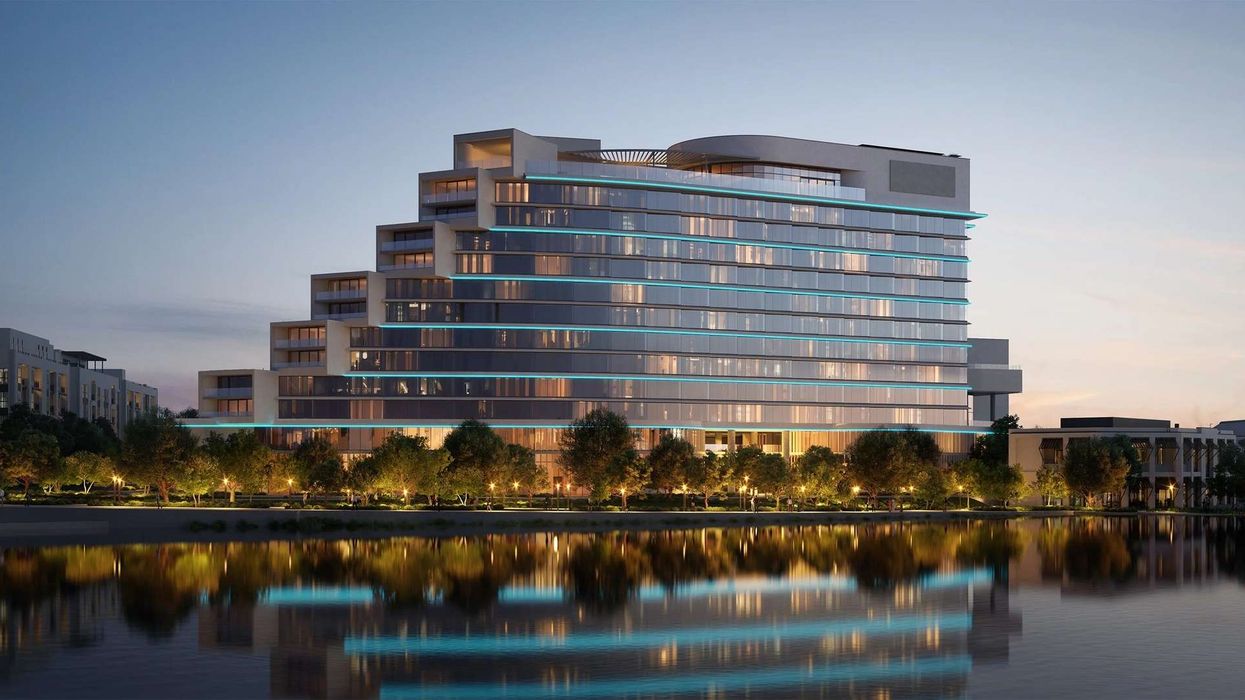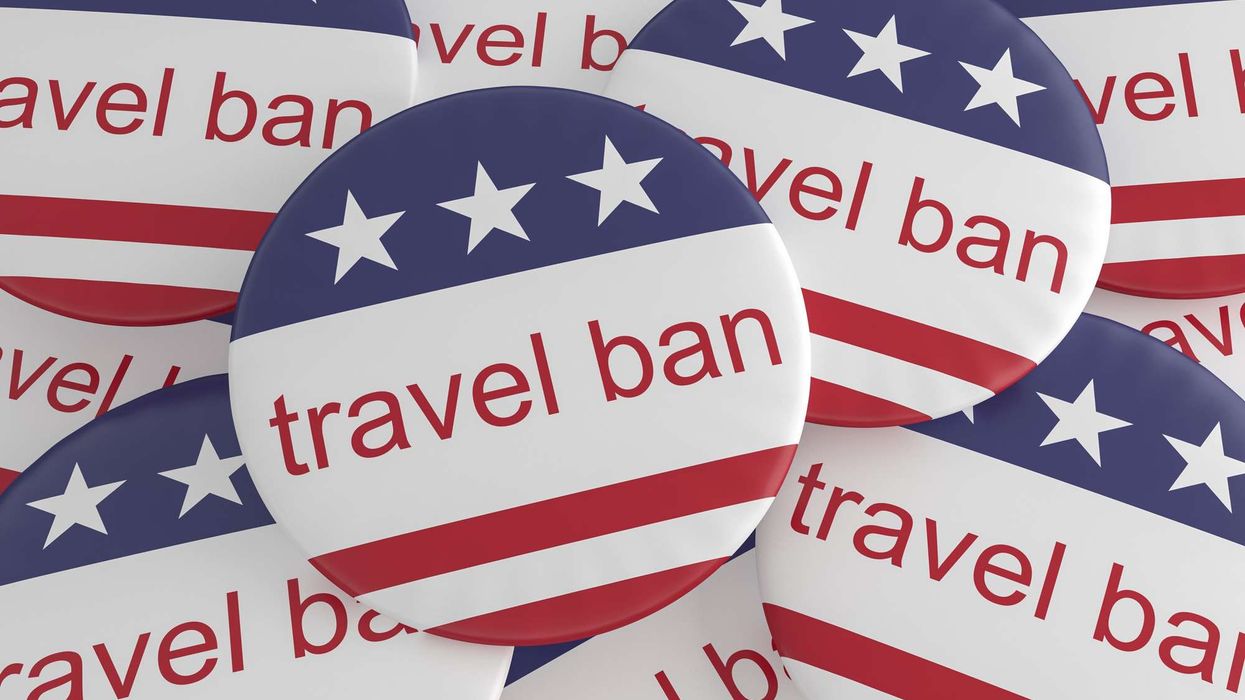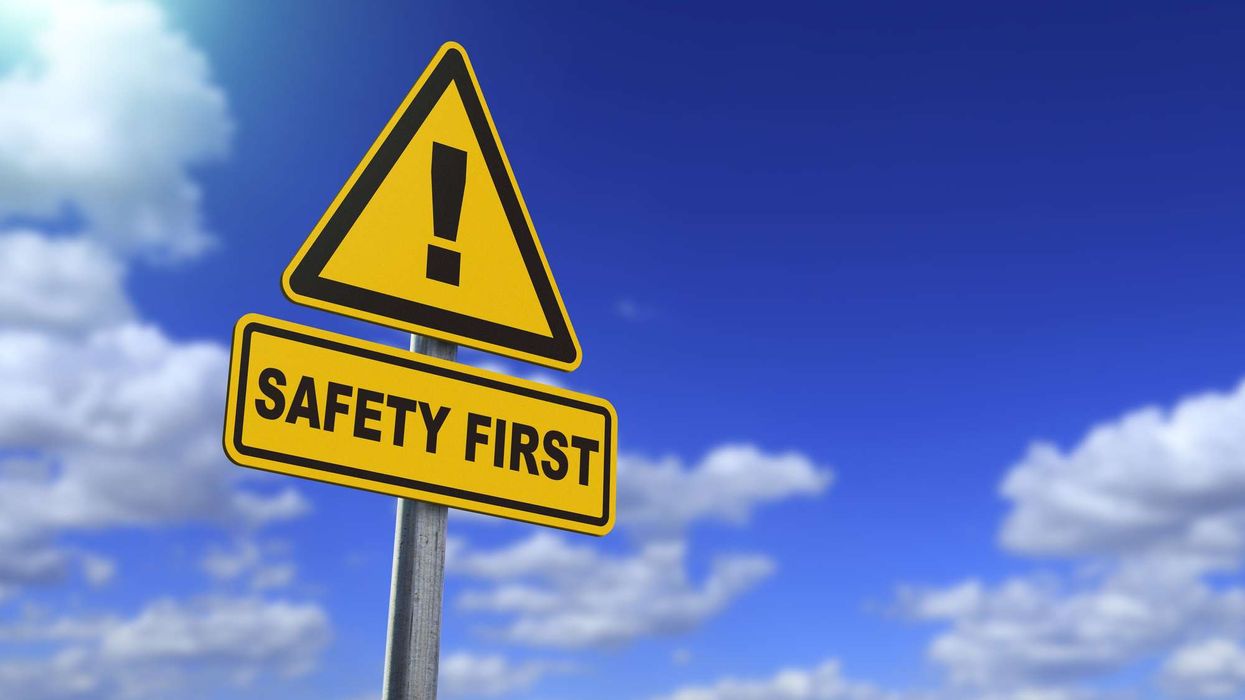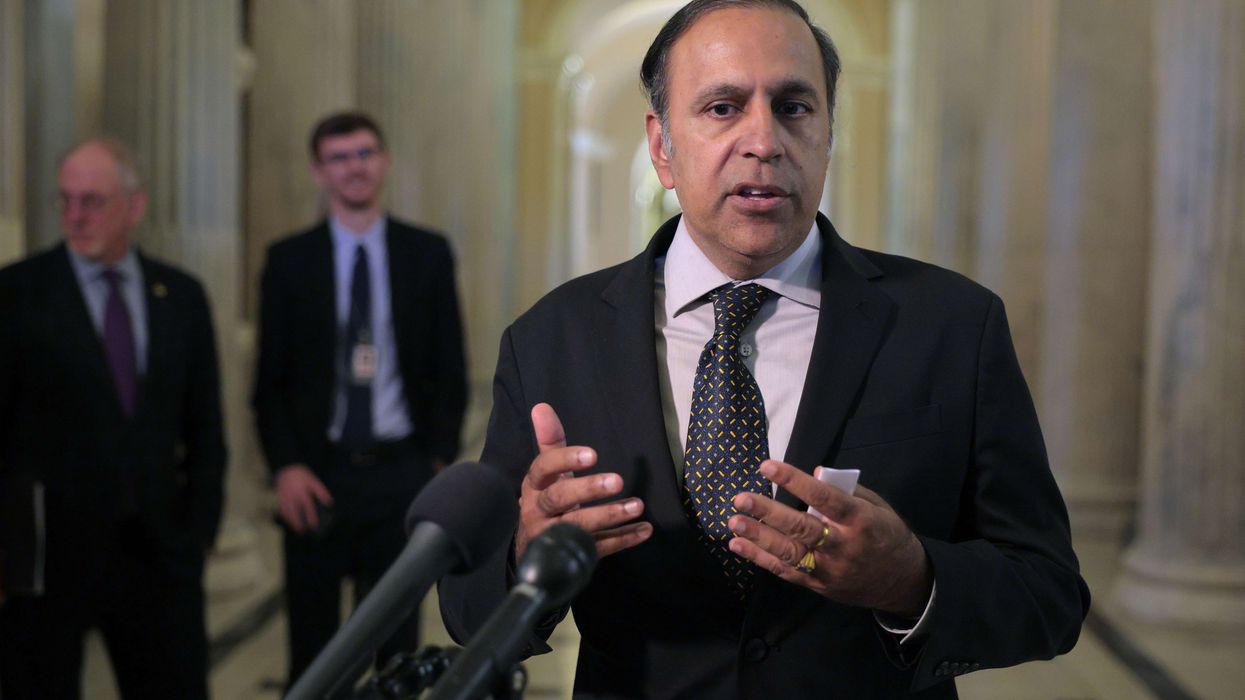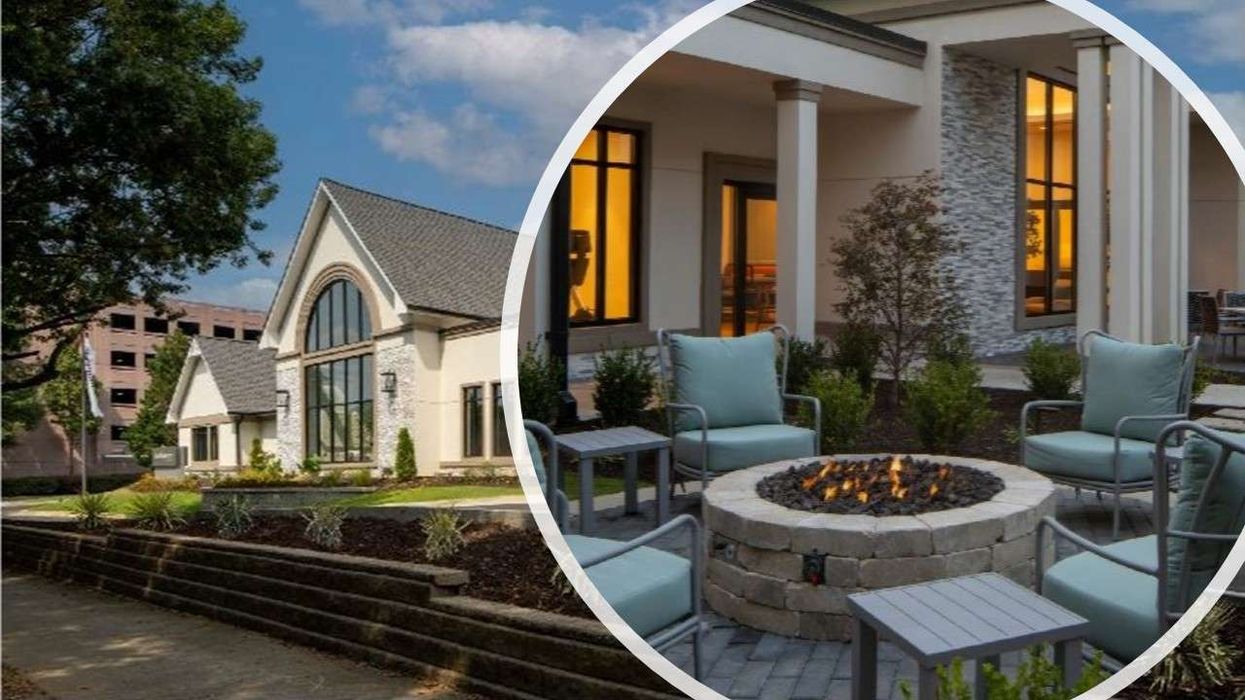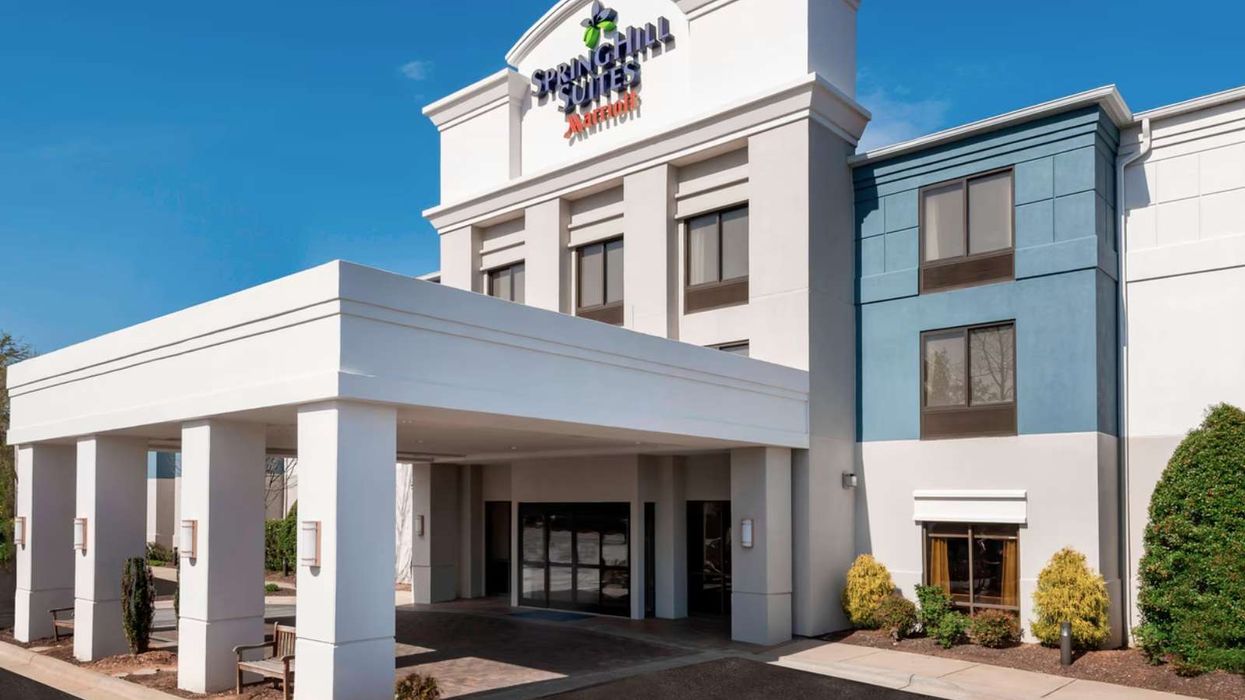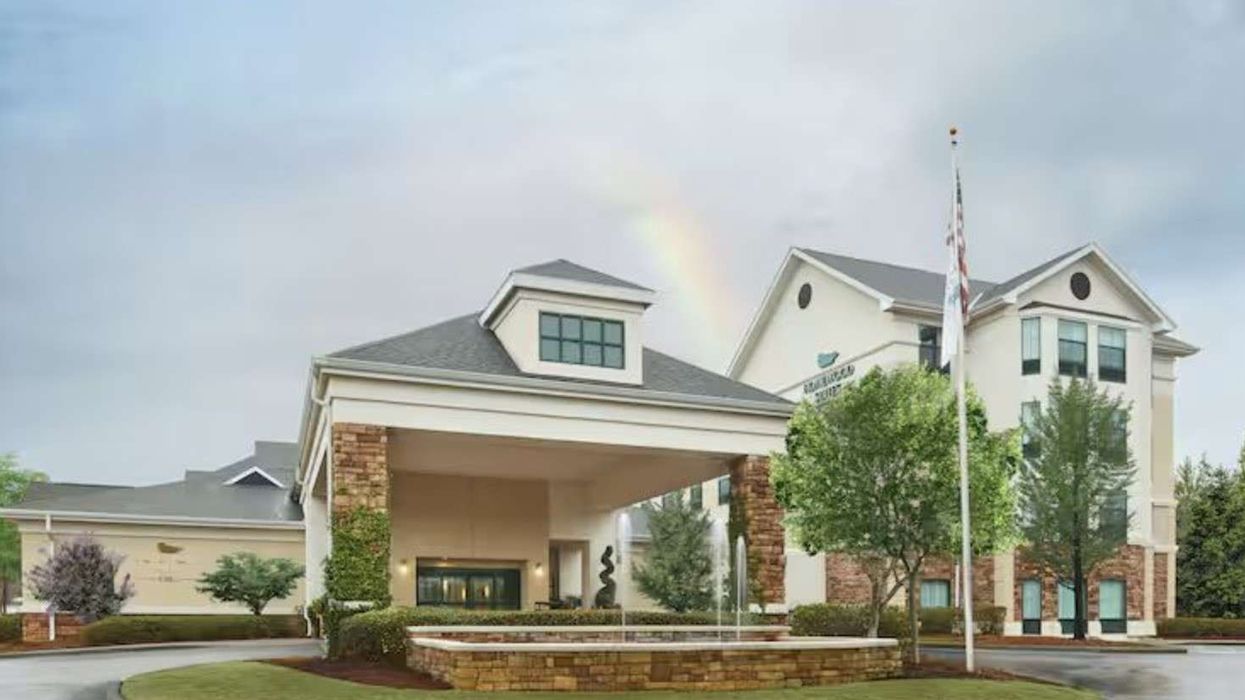OVER THE PAST four years, utility costs at U.S. hotels have increased at a pace greater than total operating revenue. As a result, utility department expenses increased from 2.9 percent of total revenue in 2019 to an estimated 3.3 percent in 2023. As hotels have struggled to recover from the pandemic, any rise in cost ratios is an area of concern for owners and operators.
The good news is that the pace of growth appears to be slowing down. Year-over-year growth rates for utility expenditures have declined on a dollar per-available-room basis from a high of 21.4 percent in 2022 to an estimated 4 percent in 2023. Taking the variability of increasing occupancy levels into account, the growth in utility expenses measured on a dollar per-occupied room basis was under one percent each of the past two years.
However, in the bigger picture, what is this data telling us about potential volatility in utility expenditures and how might hotels better position themselves to dampen these economic blows?
To assess recent trends in U.S. hotel utility costs, CBRE analyzed the utility expenditures of 4,072 hotels that submitted detailed cost data each year from 2019 through 2022 for the firm’s annual Trends in the Hotel Industry survey. A preliminary sample of 2,000 properties was used to estimate 2023 utility expenditures. In 2023, these properties averaged 199 rooms in size, with an average occupancy level of 68.9 percent and an ADR of $199.73.
Variations by Property Type
On average, utility costs were $2,370 PAR in 2023, or $9.42 on a POR basis. Given the extensive services and amenities offered, utility expenses were greatest at convention and resort properties. Fortunately, the diversity of income sources and higher ADRs mutes the impact of utility costs as a percent of revenue (2.9 percent) at these property types.
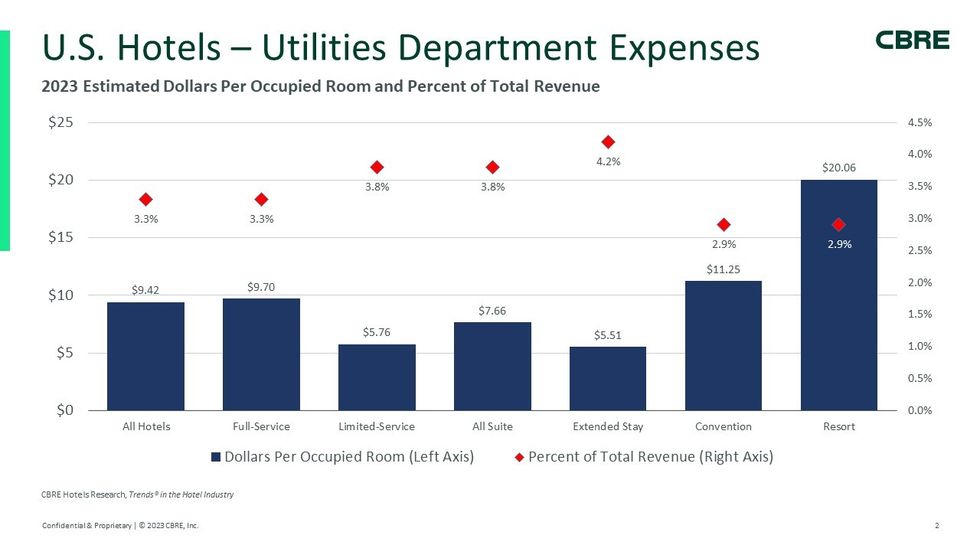
Operators at convention and resort hotels not only benefit from greater revenue, but they appear to have been the most successful at controlling costs as well. From 2019 through 2023, utility costs at resort and convention hotels increased at compound annual growth rates of 3.7 percent and 1.5 percent, respectively. This compares relatively favorably with the CAGR of 3.6 percent for all hotels in the sample during the same period.
On the other end of the spectrum, limited-service and extended-stay hotels spent the least on utilities both on a PAR and POR basis in 2023. However, utility costs averaged roughly 4 percent of revenue at these hotels given their lower levels of ADR and total revenue. Compounding the pain for limited-service and extended-stay owners and operators is the fact that utility expenditures have increased at CAGRs greater than 4 percent since 2019. These are the highest utility cost expenditure growth rates among all property types.
This disparity between hotel types may relate to their construction and operation. Resort and convention facilities tend to have more centralized mechanical, electrical and plumbing systems, which are more often controlled by building automation systems that can be optimized and adjusted for energy efficiency through adjustments for occupancy and facility use patterns. In addition, these larger facilities are more likely to have engineering staff more closely monitoring and maintaining systems, as opposed to limited service and extended stay which have much more decentralized systems (think separately controlled PTACs in each guest room), and limited engineering and maintenance staff.
Variation by Utility Cost Category
Consistent with the 11th edition of the Uniform System of Accounts for the Lodging Industry, CBRE captures expenditure data for five different categories within the utilities department.
- Electricity
- Gas/Fuel
- Steam
- Water/Sewer
- Other
While total utility expenses increased at a CAGR of 3.6 percent from 2019 through 2023, we did observe some variation by type of utility. Gas/fuel expenditures grew at the greatest GAGR (6.7 percent) during the four-year period, however, growth during this period was uneven. On a PAR basis, gas/fuel expenditures increased close to 40 percent in both 2021 and 2022, however, in 2023, this cost category declined by 1.4 percent. The 4.3 percent decline in gas/fuel expenditures on a POR basis in 2023 implies that the PAR decline can be partially attributable to a falloff in gas/fuel prices. U.S. Energy Information Administration data for this period validates this assumption, showing a 100 percent increase in price between 2020 and 2022, and leveling off to a 33 percent increase in pricing in 2023 as compared to 2020.
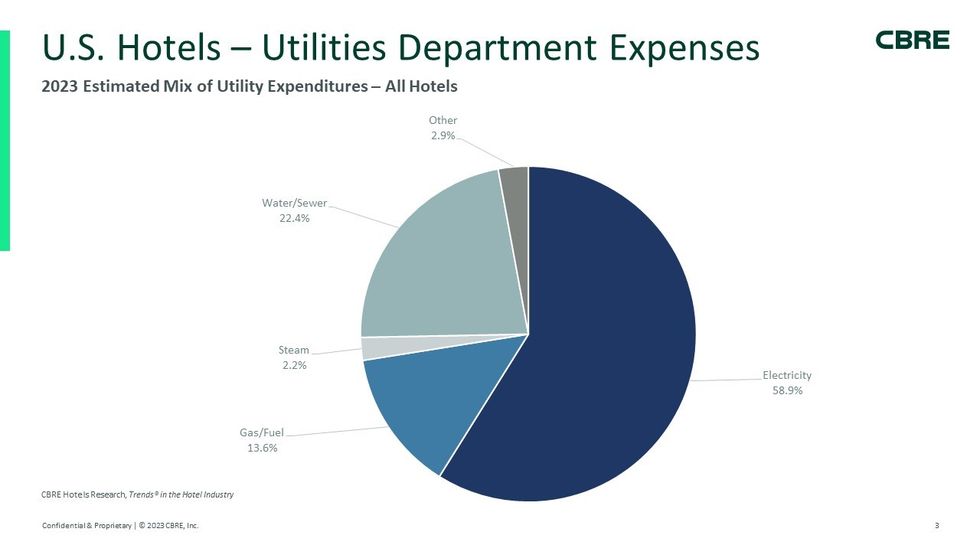
Electricity expenditures comprise the greatest share of hotel utility costs at 58.9 percent of total department costs. This cost category increased at a CAGR of 3.7 percent from 2019 through 2023, while water/sewer costs increased at a CAGR of 2.7 percent. Like gas/fuel, total expenditures for electricity and water/sewer declined on a PAR basis in 2023. However, when measured on a POR basis, electricity and water/sewer costs increased in 2023. This implies either an increase in the cost per unit for electricity and water/sewer, or less control over consumption in these categories. To validate this assumption, the U.S Energy Information Administration shows an over 20 percent increase in the cost per kilowatt hour for commercial energy from 2020 to 2023.
Need to Control
According to the November edition of Hotel Horizons the pace of RevPAR growth is forecast to slow down in 2024 to 3 percent the lowest growth rate in upcoming four years. Accordingly, it will be the goal of hotel owners and operators to keep utility expenditure increases to below 3 percent in 2024 after growing by 4 percent in 2023.
To summarize the conundrum facing hotel operators in the past four years, electric rates have increased over 20 percent and gas prices have settled at a 33 percent increase during the same period. Electric and gas make up about 2.4 percent of a hotel’s total revenue, a significant impact to operating costs.
Today’s market conditions are unpredictable and volatile and to compound that instability, hotels have also seen a variety of other irregular factors that can impact operations and energy usage, including hurricanes, flooding, wildfires, heat waves, cold snaps, and socioeconomic variables such as the pandemic.
In times of uncertainty, it is important to focus on the variables that can be controlled. In the utility-cost equation, there are two variables which a hotel can control. The first is their utility contract terms/pricing, and the second is how much energy they use. By focusing on these two areas early, hotels will be better prepared to weather future storms of all varieties.
Understand Pricing and Terms
On the contract side, in some markets, hotels may have the option to negotiate utility pricing and terms. Hotels that had longer term pricing arrangements, verses month-to-month market rate terms, likely saw fewer peaks when the natural gas prices were spiking in 2022.
Understand the Billing
Many commercial contracts not only are tied to how much energy a hotel uses, but also how much load is required at any one time. This peak load “demand” charge can make up a significant portion of a hotel’s bill. Thus, when a hotel uses energy and how it is distributed throughout the day can be an important cost-saving measure. For example, it may be beneficial to do laundry at a time of day when there is less energy usage happening elsewhere in the building.It’s important to note that this strategy starts with understanding exactly how the utility bill is structured.
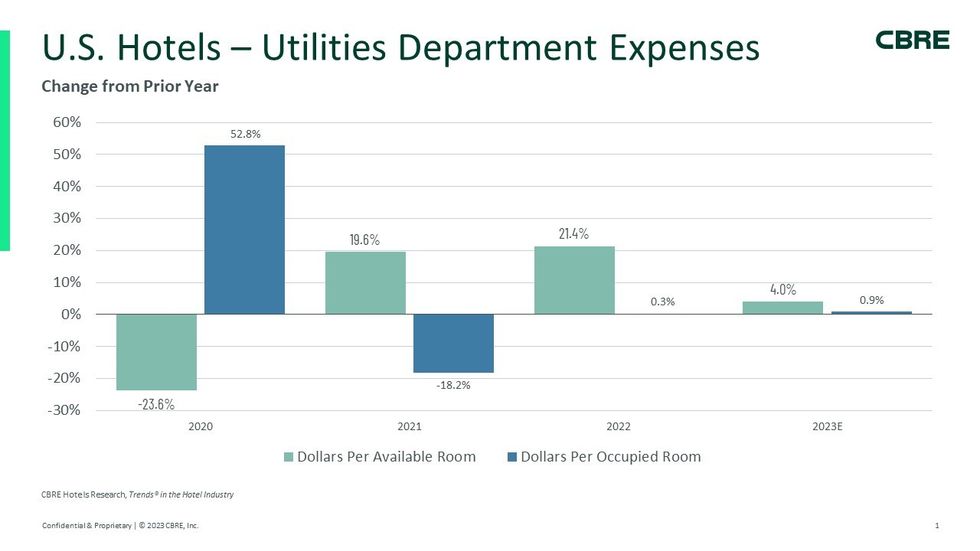
Find Energy Saving Opportunities
Finally, hotels that use less energy will be charged less during the peaks when the weather is forcing the facility to work harder, or the utility price has escalated. The most important factor to look at is how energy systems are controlled. Being able to manage systems centrally can allow for quick adaptation when needed, while also allowing for longer-term measures to be implemented. For example, when hotels were suddenly vacant due to COVID in 2020, hotels that had centralized HVAC controls were able to quickly put their buildings into an idling mode to maintain minimum heating/cooling/ventilation, while other hotels had to go to every room and manually adjust controls. Similarly, even during full occupancy, a centralized guest room control system can ensure rooms are not left at extreme heat or cold settings when a guest checks out. Even limited-service and suites hotels that rely on separate PTAC units in each guest room now have options with networked thermostats.
Hot water conservation is another great opportunity to save on both water and energy. High efficiency fixtures that provide quality guest experience can help capture savings even when occupancy is high.
Finally, there are often large areas of a hotel in common and back of house areas that do not see much usage for large parts of the day or night. HVAC and lighting usage in these areas can be more closely correlated to actual occupancy through either manual or automated controls.
Controlling utility costs can be a challenge, but new technologies and practices are available to both conserve energy and minimize expense growth.
See this previous article from CBRE on utility costs.


